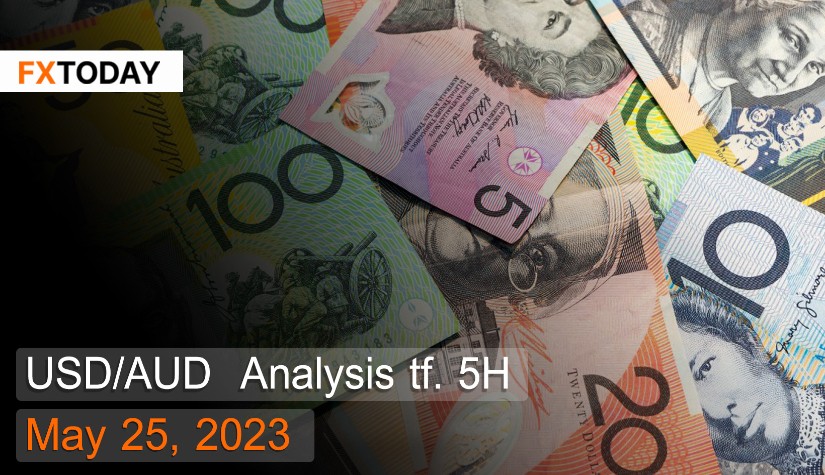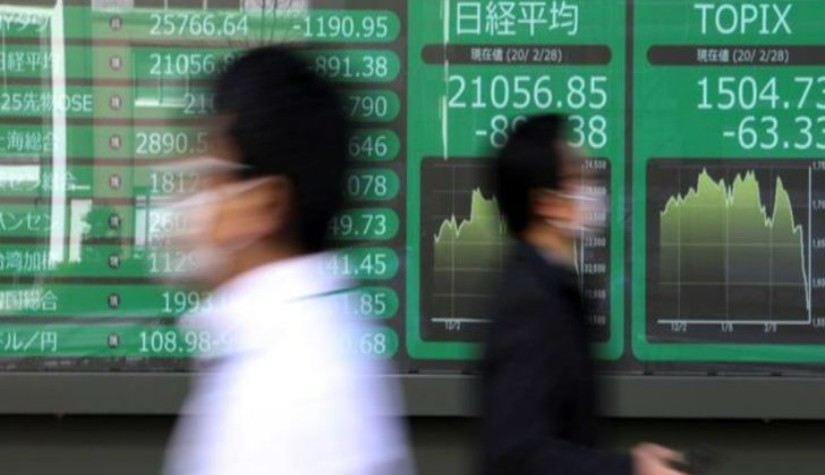The Australian dollar has been heavily impacted recently.
The Australian dollar has reached a new low in 2023 following the United States' debt ceiling reaching its maximum and the need to expand the debt ceiling. There is a growing risk of default if the debt ceiling cannot be increased. Australia itself has also been affected by declining interest rates in the country.
The AUD is rapidly depreciating with the current exchange rate at 1 USD to 1.5319 AUD, which represents a 0.25% depreciation compared to the previous day. This depreciation is a result of investor expectations that the central bank will stop raising interest rates after an initial increase to 3.85%. Additionally, Australia's exports to China have been impacted by China's shrinking GDP, which now stands at only 5%.
Furthermore, recent data indicates a surprising decline in Australian hiring in the month of April. This suggests a slowdown in the labor market and adds to the reasons for temporarily halting interest rate increases.
Mark McCormick, Global Head of FX and EM Strategy at TD Securities, stated that "the aforementioned volatility reflects the rapid changes in the market, linking the collapse of all Chinese data, the recovery of US data, and the pricing and growth expectations of the Fed and the global economy."
David Jacobs, Head of Markets at the Reserve Bank of Australia, mentioned that approximately AUD 20 billion worth of government bonds have reached maturity, and the rate is expected to increase to AUD 35-45 billion per year.
Around AUD 4 billion of the total AUD 188,000 billion provided to commercial banks under the Term Funding Facility, an emergency economic stimulus program initiated in 2021, has been repaid. A significant portion of these repayments is scheduled before September this year and June next year.
Meanwhile, Australian government bonds faced pressure, with the 3-year futures contract (YTTc1) declining by 12 basis points on Friday to 96.68, and the 10-year futures contract (YTCc1) decreasing by 11 basis points to 96.40.
Technical analysis data (5H)
Resistance: 1.5328, 1.5349, 1.5376
Support: 1.5280, 1.5253, 1.5232
| Name | S3 | S2 | S1 | Pivot Points | R1 | R2 | R3 |
| Classic | 1.5232 | 1.5253 | 1.5280 | 1.5301 | 1.5328 | 1.5349 | 1.5376 |
| Fibonacci | 1.5253 | 1.5271 | 1.5283 | 1.5301 | 1.5319 | 1.5331 | 1.5349 |
| Camarilla | 1.5294 | 1.5298 | 1.5302 | 1.5301 | 1.5311 | 1.5316 | 1.5320 |
| Woodie's | 1.5234 | 1.5254 | 1.5282 | 1.5302 | 1.5330 | 1.5350 | 1.5378 |
| DeMark's | - | - | 1.5290 | 1.5306 | 1.5338 | - | - |
Buy/Long 1: If there is a touch of support in the price range of 1.5253 - 1.5280 but unable to break the resistance at 1.5280, you may consider setting a TP around 1.5349 and a SL around 1.5232 or based on your acceptable risk level.
Buy/Long 2: If you are able to break the resistance in the price range of 1.5328 - 1.5349, you may consider setting a TP around 1.5376 and an SL around 1.5253 or based on your acceptable risk level.
Sell/Short 1: If there is a touch of resistance in the price range of 1.5328 - 1.5349 but unable to break the resistance at 1.5328, you may consider setting a TP around 1.5253 and an SL around 1.5376 or based on your acceptable risk level.
Sell/Short 2: If you are able to break the support in the price range of 1.5253 - 1.5280, you may consider setting a TP around 1.5232 and an SL around 1.5349 or based on your acceptable risk level.
| Name | S3 | S2 | S1 | Pivot Points | R1 | R2 | R3 |
| Classic | 1.5232 | 1.5253 | 1.5280 | 1.5301 | 1.5328 | 1.5349 | 1.5376 |
| Fibonacci | 1.5253 | 1.5271 | 1.5283 | 1.5301 | 1.5319 | 1.5331 | 1.5349 |
| Camarilla | 1.5294 | 1.5298 | 1.5302 | 1.5301 | 1.5311 | 1.5316 | 1.5320 |
| Woodie's | 1.5234 | 1.5254 | 1.5282 | 1.5302 | 1.5330 | 1.5350 | 1.5378 |
| DeMark's | - | - | 1.5290 | 1.5306 | 1.5338 | - | - |
















